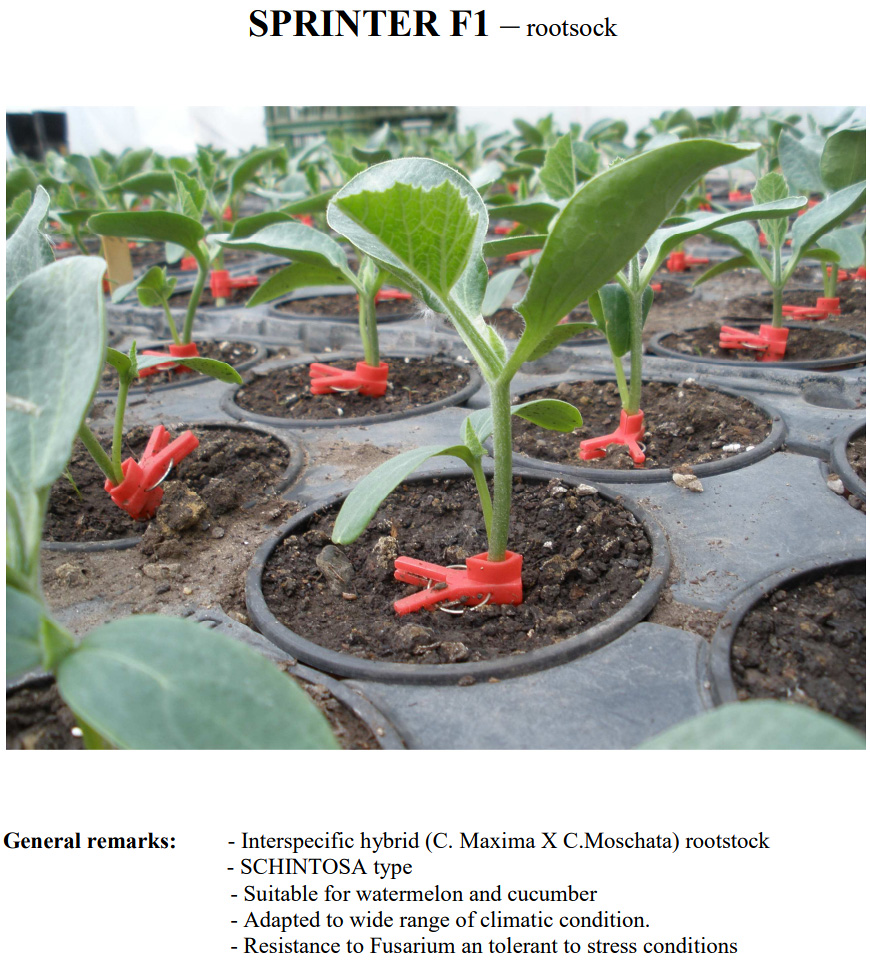Ex Tax: 2.45€
Cucumbers have weak roots, are more demanding of heat, are sensitive to temperature and humidity fluctuations, and are more susceptible to root infections than pumpkins. However, since these crops are related, cucumbers can be grafted onto pumpkins to boost their health.
* Grafting melon onto pumpkin.
Pumpkin is a resilient and vigorous plant, and this type of grafting helps the melon adapt to adverse environmental conditions: it becomes less susceptible to cold, excess moisture, and disease. This also increases yield and shortens the plant's maturation period. The best time for grafting is when the seedling is in the first true leaf stage. Melon (scion) and pumpkin (rootstock) seeds are typically sown in the second half of April to early May. Grafting begins 10-11 days after germination, after thoroughly watering the plants.
Tools required :
- grafting knife or blade
- non-woven material for dressings
- glass jar.
Step 1: Position the pot so that the pumpkin's first true leaf is on the opposite side from you. Remove the growing tip (the small second leaf).
Step 2: Using a grafting knife or a safety razor blade, make a longitudinal incision on the rootstock stem at the hypocotyl, between the cotyledon leaves, on the side opposite the first true leaf. The incision should be straight, extending the entire depth of the stem tissue down to the hollow space in the center, but no more than 2 cm.
Stage 3: The scion is cut from the root and a very thin layer is scraped off from the side of the cotyledon leaves to the same length as the cut on the pumpkin.
Step 4: Before inserting the scion into the rootstock, carefully open the cut in the rootstock. To do this, bend the pumpkin stem slightly: press away from you with your left thumb from below the cut and toward you with your index finger from above; the wound will open easily. Insert the scion into the pumpkin cut from above, ensuring the cuts touch.
Step 5: Make sure the tip of the melon reaches the end of the cut on the pumpkin and doesn't extend into the hollow space. The melon cotyledons should be above and parallel to the pumpkin cotyledons.
Step 6: Narrow strips of non-woven material are suitable for dressing the wound on grafted plants; in a pinch, cotton wool can be used. Apply the bandage over the entire incision from top to bottom, leaving no open areas. It's crucial that the bandage fits snugly around the stem but doesn't press into it. The bandage can be loosened if necessary, and removed completely only after the seedlings are planted in the ground.
Stage 7: To ensure the rootstock and scion fuse together, create a humid environment by covering the plant with a glass jar or plastic bag. In the first few days after grafting, protect the plants from direct sunlight by covering them with paper and airing them daily, removing the jar for a few seconds. If the rootstock and scion fuse successfully, growth begins within 6–8 days.
! You can graft watermelon and cucumber onto pumpkins using the same method—and you're guaranteed an early, bountiful harvest of these crops. For grafting, choose more cold-hardy, hard-skinned pumpkin varieties. Butternut squash and large-fruited pumpkins are not suitable.

Bot.: Cucurbita maxima x Moschata.












